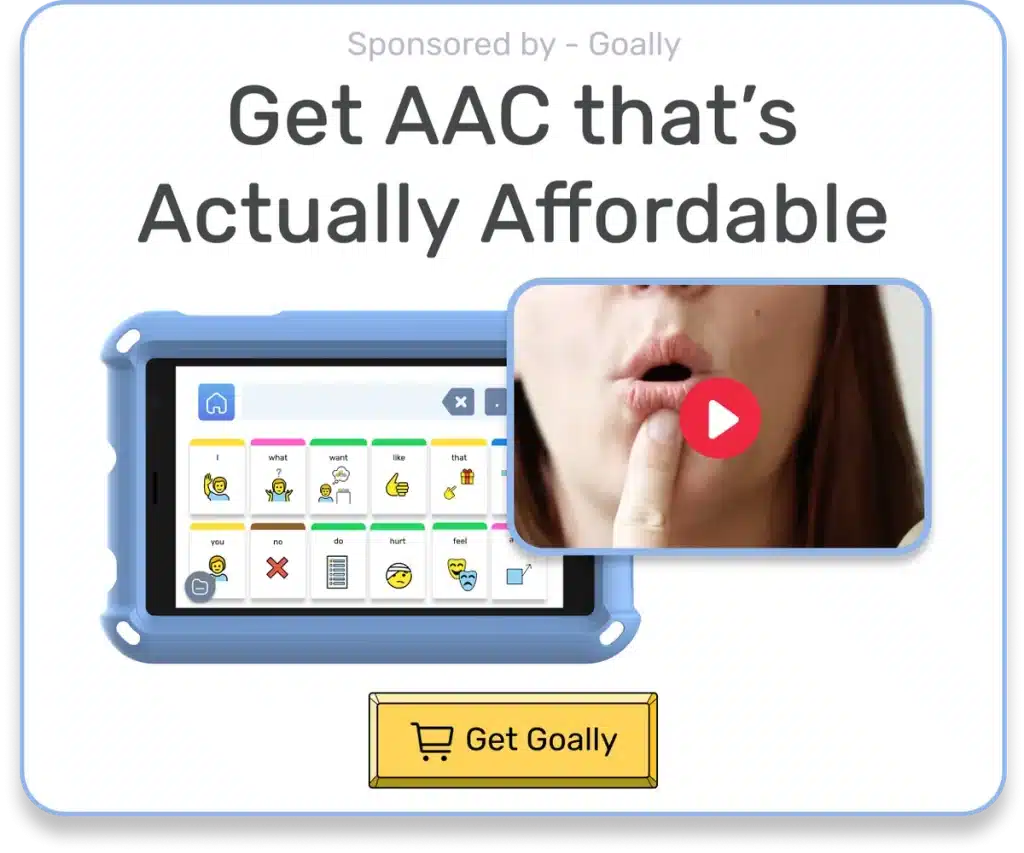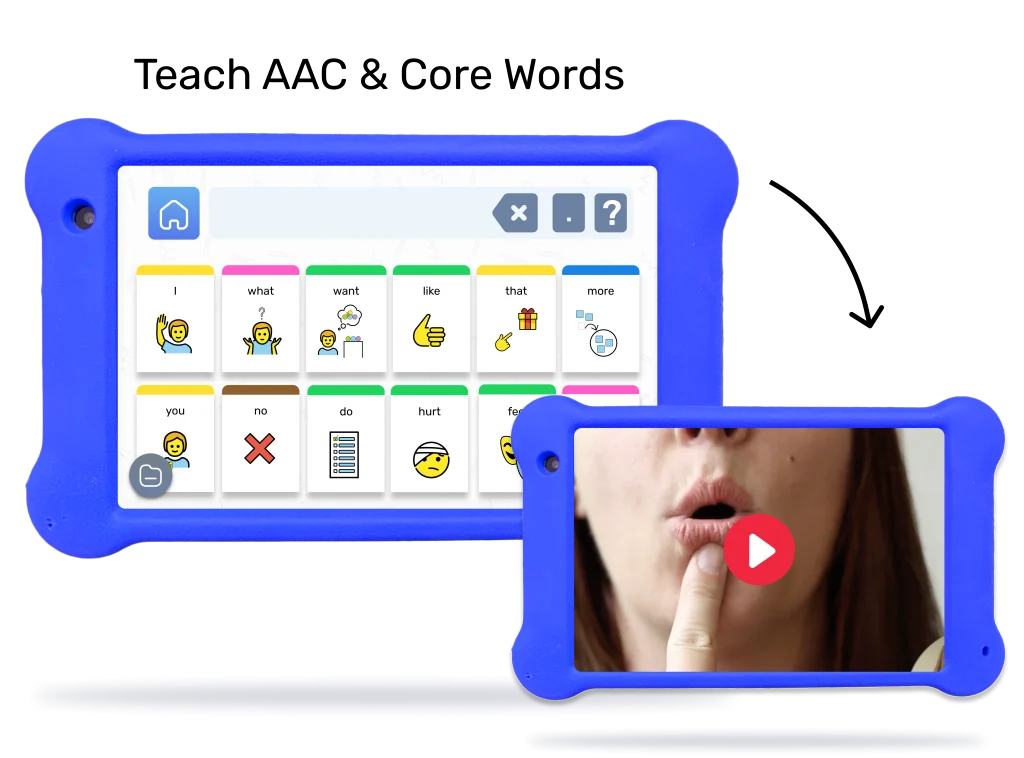As a licensed practitioner who works with kids, I often get asked by parents if using Augmentative and Alternative Communication (AAC) will hinder their child’s speech development. I remember one particular conversation with a mom named Sarah, whose 4-year-old son, Max, had been diagnosed with autism. She was worried that introducing an AAC device would discourage Max from learning to speak. I reassured her that, in fact, research shows that AAC can actually support speech production and language development in children with communication challenges.
Table of Contents
What is AAC?
AAC encompasses various techniques and tools that help people express their thoughts, wants, needs, feelings, and ideas when speech alone is not sufficient. These techniques include manual signs, gestures, finger spelling, and the use of speech-generating devices (SGDs) or assistive communication devices. AAC is not just for children with autism; it can benefit kids with a wide range of communication difficulties, such as cerebral palsy, Down syndrome, or developmental delays.
AAC and Speech Development
Most studies have reported an increase in speech production when children use AAC, although the gains are often modest. A meta-analysis of 69 studies found that AAC interventions had a positive effect on speech production in individuals with developmental disabilities, with an average of 2.5 more spoken words per minute following AAC intervention (Ganz et al., 2017).

Read more: What Are the Types of AAC?
I’ve seen firsthand how AAC can reduce frustration and support language development in the kids I work with. For example, I once worked with a 6-year-old girl named Lily who had Down syndrome. Lily understood many words but struggled to express herself verbally. When we introduced an AAC device with picture symbols, Lily was able to communicate her choices and preferences more effectively. Over time, she began using more spoken words alongside her device, demonstrating how AAC can complement and encourage speech development.
AAC and Language Learning
AAC can also support language learning in infancy and toddlerhood, which is crucial for later literacy skills. Research has shown that typically developing infants and toddlers who are exposed to baby sign language (a form of AAC) demonstrate earlier and more advanced language development compared to their non-signing peers (Acredolo & Goodwyn, 2000).
I often encourage parents to use simple signs and gestures with their babies, even if they are not showing signs of communication difficulties. By doing so, they are providing their child with an additional means of expressing themselves and understanding language. It’s incredible to watch a baby as young as 8 months old sign “more” or “all done” during mealtime!
Choosing the Right AAC Approach
When considering AAC for your child, it’s essential to work with a speech-language pathologist or other qualified professional to determine the most appropriate approach. Factors to consider include your child’s age, cognitive abilities, motor skills, and communication needs. Some children may benefit from low-tech options like picture boards or sign language. In contrast, others may thrive with high-tech devices that generate speech output.
I always remind parents that AAC is not a one-size-fits-all solution. What works for one child may not be the best fit for another. The key is to remain open-minded, patient, and willing to try different approaches until you find what works best for your child and family.

Goally | Apps that Teach Kids AAC & Core Words
Is your child facing challenges in expressing themselves or communicating effectively? Goally has one of the best language language learning apps for kids to support their journey in building essential communication skills!

The Word Lab and AAC Talker apps provide a simple, engaging platform for your child to learn core words and become a functional communicator right from the start. Customize the experience with a voice that suits them, and watch as their confidence grows in expressing their thoughts and needs!
To sum up, AAC does not prevent speech development in children. Instead, it can support speech production, reduce frustration, and promote language learning. If you’re considering AAC for your child, don’t hesitate to reach out to a professional for guidance. Remember, the goal is to provide your child with the tools they need to communicate effectively and confidently, whether through speech, signs, or assistive technology.
Additional Resources:
- American Speech-Language-Hearing Association (ASHA): AAC – Provides an overview of AAC and how it can benefit individuals with communication disorders.
- PrAACtical AAC – A blog dedicated to sharing practical AAC strategies and resources for families and professionals.
- AssistiveWare: Learn AAC – Offers free online courses and resources to help parents and professionals learn about AAC and support children who use it.
FAQ’s About Does AAC Prevent Speech Development
What is AAC?
AAC stands for Augmentative and Alternative Communication, which includes various tools and strategies to help people with communication difficulties express themselves.
Can AAC help with speech development?
Yes, research shows that AAC can support speech production and language development in children with communication challenges.
Is AAC only for children with autism?
No, AAC can benefit children with a wide range of communication difficulties, such as cerebral palsy, Down syndrome, or developmental delays.
How do I choose the right AAC approach for my child?
Work with a speech-language pathologist or other qualified professional to determine the most appropriate AAC approach based on your child's age, cognitive abilities, motor skills, and communication needs.
Can babies benefit from AAC?
Yes, exposing typically developing infants and toddlers to simple signs and gestures (a form of AAC) can support earlier and more advanced language development compared to their non-signing peers.
This post was originally published on 10/26/2022. It was updated on 04/08/2024.







